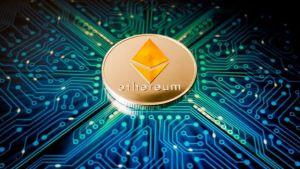Optimistic Rollups Not All the Same: A Review of Ethereum L2 Solutions
Disclaimer: The Industry Talk section features insights by crypto industry players and is not a part of the editorial content of Cryptonews.com.

Optimistic Rollups are often considered as the next major achievement for Ethereum, which will allow it to scale and take back the crown it has recently lost as the most used blockchain for DeFi.
In a nutshell, Optimistic Rollups (OR) are a class of layer-two solutions that allow to multiply a blockchain’s throughput by offloading some of the computations involved, while still relying on its security model based on Proof of Work or, in the near future, Proof of Stake.
The Optimistic Rollup name comes from their two main features: they “roll up” the data and they do so with “optimistic” assumptions. What this means, in practice, is that an OR’s data involving all transactions and balances is present on the layer-one blockchain, or Ethereum. This means that it can be used to return funds to their owners if the layer-two should go bad, which makes it a key improvement over previous Plasma proposals. The OR is optimistic because it makes no attempt to guarantee that the data being published is valid, instead it is simply assumed to be so. To make up for this assumption, there is a challenge period during which anyone can submit “fraud proofs” stating that this data is invalid. Fraud can be conclusively verified through cryptography, which makes it a surprisingly robust mechanism for guaranteeing security. As long as there is at least one honest watcher, there will be no fraud.
But the devil is in the details, and there are several OR solutions on the market that differ in their architecture, presenting different trade-offs or clear improvements.
Optimism
Optimistic Ethereum (OE) by Optimism is the most well-known type of Optimistic Rollup, backed by prominent members of the Ethereum community.
For the most part, OE is basically Ethereum: it uses Solidity or Vyper for smart contracts, its nodes are modified Geth nodes, and in general it tries to maintain the same software as much as possible. There are technical differences involved in making it ready for layer-two usage, but for developers it is essentially the same as developing on Ethereum directly. This is its main advantage over other rollups or Plasma solutions, as it can host DeFi smart contracts with minimal changes.
OE’s drawback is what happens when you try to withdraw money from the L2 to use it in other places, or on the Ethereum main chain. Due to the fraud proof mechanism, the challenge period has to be long enough to give the chance of providing these proofs. Optimism has set it to one week, which it expects would be enough for the most comprehensive of fraud attempts, even ones that involve attacks to Ethereum itself. But for the end user, this is a major pain point, as their money is unusable for two weeks. This will always create an element of friction that risks undermining the point of using L2s in the first place.
Arbitrum
Arbitrum is a somewhat different Optimistic Rollup architecture from Optimism, though it maintains a lot of the same elements. Like Optimism, it too is intercompatible with Ethereum. Like Optimism, it also has a one week withdrawal waiting period.
Arbitrum’s main advantage is higher performance. Its fraud proofs have a much smaller footprint because they seek to find a very specific point of disagreement over the history of transactions. This means that Arbitrum has a higher transactional capacity, as any rollup is ultimately limited by the space that its data occupies on the main chain.
Metis
Metis is a recent proposal that aims to decentralize the Optimistic Rollup architecture. ORs can be surprisingly centralized due to the role of the sequencer, or who runs the nodes and performs the transactions. While the layer-two architecture means that the sequencer cannot easily steal funds, this design is responsible for the long fraud proof windows.
Metis’s concept is to create a decentralized network of sequencers, backed by an innovative spin on DAOs called the Decentralized Autonomous Company (DAC). The DAC is a blockchain-native company, which can set its own rules and permissions. By creating a DAC-based ecosystem of sequencers, the architecture can be made more decentralized and thus accommodate a much shorter fraud proof window.
Fuel
The Fuel Optimistic Rollup was the first to be launched on mainnet in late 2020, but it uses a radically different design optimized for token transfers. Fuel does not support smart contracts, but it is highly efficient at making payments, supporting 500 transactions per second with a potential 4000 maximum. Its transfers only cost 1000 gas, compared to 21,000 for normal ETH transactions.
Fuel competes with other types of payment-only L2s like zkSync or Plasma. Though it carries some advantages, it cannot support the lively DeFi ecosystem on Ethereum.
{no_ads}







